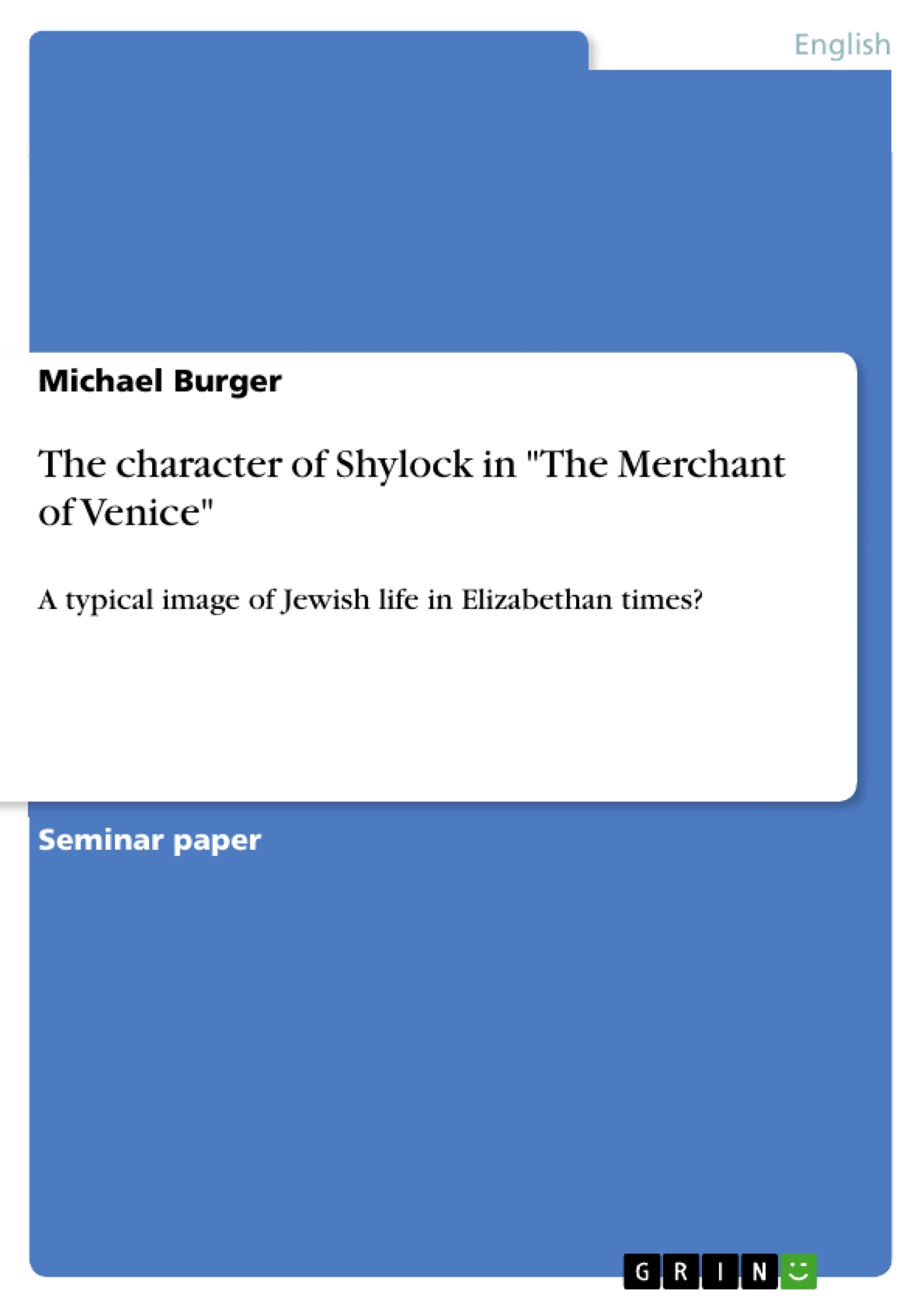William Shakespeare’s The Merchant of Venice surely can be considered one of the playwright’s greatest works. Still today critics are not fully aware of its actual meaning and there are many different opinions of how this play is to be interpreted. As a matter of fact we can say that Shakespeare has created one of the most diverse plays in the history of drama. Containing two equally important plot-lines and several sub-plots it is very difficult to make out even one main character or to be absolutely sure about their variety of intentions.
On the one hand there is one of the main characters, the Jew Shylock, “a comic antagonist far more important than any such figure had been in his [Shakespeare’s] earlier comedies” , who plays the role of a non-Christian villain. And opposing him we have the Venetian society with all its flaws and hypocrisies which are pointed out during the conflict with Shylock. On the other hand there is the romantic love story between Portia and Bassanio located in remote Belmont, which is the actual trigger for the conflict between Antonio and Shylock and also brings a solution to it. This solution is due to Portia’s cunning and liberation as a woman, which can be seen in her disguising as the judge in order to be able to save Antonio’s life; there are only two qualities which are supposed to be quite unusual for a female character of that time. But at the same time she has to fulfil her typical role as “a faithful daughter whatever the consequence” , yielding to fate by obeying her father’s will. And Portia is not the only ambigous and exceptional figure of the play.
Table of Contents
- Introduction
- Poltitical Circumstances of Jewish Life in the 16th Century
- Shylock's Appearances in The Merchant of Venice
- Shylock and His Daughter Jessica
- Shylock and Antonio
- Shylock and Venetian Society in General
- Shylock's Representative Role as a Character in the Play
- Conclusion
Objectives and Key Themes
This paper examines the complexity of Shylock's role in Shakespeare's The Merchant of Venice, focusing on his interactions with other characters. It explores the socio-historical background of Jewish life in Elizabethan Britain and speculates about the author's intentions in portraying Shylock.
- The portrayal of Shylock as a non-Christian villain against the backdrop of Venetian society.
- The impact of historical circumstances and prejudices on the characterization of Shylock.
- The exploration of Shylock's relationships with other characters, particularly his daughter Jessica and Antonio.
- The analysis of Shylock's role as a representative figure within the play.
- The examination of the play's themes of prejudice, intolerance, and societal norms.
Chapter Summaries
The introduction establishes the context of The Merchant of Venice as one of Shakespeare's most complex and debated plays. It highlights the dual narrative strands of Shylock's conflict with Venetian society and the romantic story of Portia and Bassanio.
The second chapter delves into the historical context of Jewish life in 16th-century England, underscoring the prevalent attitudes of exclusion, intimidation, and persecution towards Jews. This section explores the historical events that might have influenced Shakespeare's portrayal of Shylock.
The third chapter focuses on Shylock's appearances throughout the play, analyzing his interactions with different characters. It examines Shylock's strained relationship with his daughter Jessica and his antagonistic relationship with Antonio. It also explores Shylock's position within the broader Venetian society.
The fourth chapter delves into Shylock's role as a representative figure in the play. This section analyzes how Shylock embodies the common resentments and negative prejudices directed towards Jews in Elizabethan England.
Keywords
Key terms and concepts examined in this work include: Jewish life in Elizabethan England, antisemitism, prejudice, stereotypes, Shylock, The Merchant of Venice, Shakespeare, characterization, social norms, and historical context.
- Quote paper
- Michael Burger (Author), 2007, The character of Shylock in "The Merchant of Venice", Munich, GRIN Verlag, https://www.grin.com/document/91103




